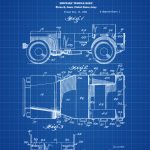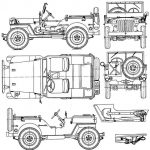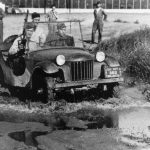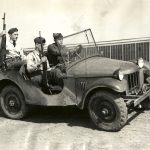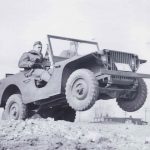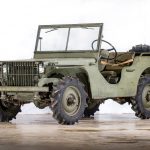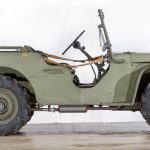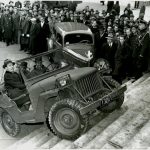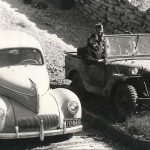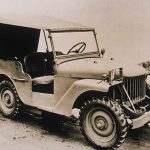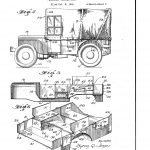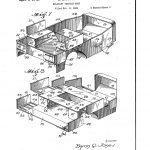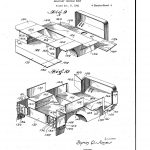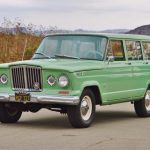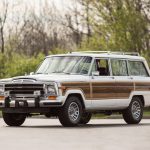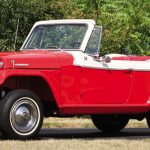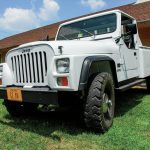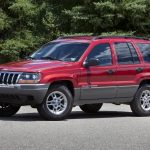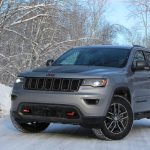On July 11, 1940 when the US Army finished formalizing the requirements for a sorely needed light, 4x4 reconnaissance vehicle that needed standardization, they have submitted them to 135 U.S. automotive manufacturers.
The requirements ranged from “common sense” to “unrealistic”:
- Four-wheel drive
- Carry 3 people
- Feature a fold-down windshield
- Payload equal or greater to 660 lb / 229 Kg
- A maximum wheelbase (the distance between the front and rear axles of a vehicle) of 75 inches / 191 cm
- Up to 47 inches / 119 cm for the track (the distance between two front or rear wheels)
- An engine with a minimum of 85lb-ft / 115N-m of torque
- An empty weight of no more than 1,300 lb / 590 Kg
On top of stringent and very specific requirements, the time-line was extremely short: only 11 days to submit the bids! And as if that wasn’t enough, any bidder had to complete the prototype in 49 days as well as just 75 days to build 70 test vehicles.
Only two small, niche, manufacturers entered bids: Bantam America and Willys-Overland with the third – Ford – entering a bid later. Although Willys had the lowest bid, they were penalized because the company requested more time to complete the prototype and the test vehicles; as such, Bantam received the contract being the only company that committed to deliver according to the terms that the Army set. Bantam then proceeded to hire designer Karl Probst to collaborate (he initially refused, but later was persuaded by the U.S. Army to help).
The design drawings of the first Bantam prototype called “Bantam Reconnaissance Car” (or BRC) were ready in only two days with a cost estimate ready after just another day.
On 23 September 1940, Bantam delivered for initial testing a hand-built prototype that except for the engine torque, met all the requirements put forth by the Army; this prototype known as “Old Number One” is the model that all other were based on and which eventually became the production Army Jeep.
The Jeep ownership saga took a turn becoming more complicated when the Army, after figuring out that Bantam did not have the capabilities to deliver on the scale required, encouraged both Willys and Ford to continue their efforts for to build a prototype. Claiming that the Government owns all blueprints and designs associated with the project, the Army not only that they allowed the other two manufacturers to study Bantam’s prototype, but they in fact forwarded all the technical papers to them. Giving Bantam’s financial issues at the time, the company did not dispute the Government’s claims. The determining factor for winning the contract was trial results.
By November 1940, both Willys and Ford submitted competing prototypes for trials; as expected, all prototypes turned out very similar. The Willys prototype was called “Willys Quad” while Ford’s entry was named Ford Pygmy.
The war was advancing at a fast pace and as such, the Army was under high pressure to commence production. Changing the weight requirement – which neither one of the three manufacturers could meet – to 2,160 lb (980 Kg) al three prototypes were declared acceptable and each company received an order for 1,500 units. Unfortunately, Bantam could not meet the 75 vehicles / day required by the US Army and as a result their contract was given to Willys and Ford.
The US War Department decided in July 1941 to standardize the production to a single manufacturer together with an order for 16,000 vehicles. The declared winner was the Willys design due mainly to its much more powerful engine, the so called “Go Devil” engine which with it’s 60 HP dwarfed the competition since the adapted tractor engine Ford was using had an output of only 49 HP.
Only three months later, in October 1941 it became clear that Willys could not keep up with the demand, so the Army contracted Ford yet again to build Jeep vehicles with the caveat that they had to use Willys design including the engine. Ford then designed their Ford GPW version of the Jeep and used common parts whenever possible thus ensuring interchangeability.
In the same October 1940, U.S. Army filled for a patent regarding the design of the vehicle and in April 1942 U.S. patent no. 2278450 entitled “Military vehicle body” was awarded for the WW II Jeep.
One year later, Willys-Overland filed to trademark the “Jeep” name and after the war starting in 1945 onwards, the company started to produce the first civilian Jeeps naming them CJ. They were the first large-scale produced all-wheel-drive vehicles.
A few years later, in 1948 to be exact, following a lawsuit filled by Bantam, the US Federal Trade Commission did not allow Willys to claim ownership of the Jeep vehicle idea, as in fact it was a creation of all three manufacturers. Despite winning in the courts, Bantam went bankrupt just two years later. In the same year – 1950 – the courts awarded the “Jeep” trademark to Willys.
In 1953, Kaiser Motors led by Henry J. Kaiser recognized the value of Jeep vehicles and merged with Willys-Overland which became the “Willys Motors” division and continued the production of civilian Jeeps under various CJ nomenclature along with some other new products such as the Jeep Wagoneer and the Jeepster, as well as the military Jeep known as M151. Later, in 1963, Kaiser desired to standardize their various division names, the Jeep division’s name was changed again to “Kaiser Jeep Corporation”.
American Motors Company – AMC – wanted to expand their product line being in direct competition with “the big three” so they decided to acquire the Kaiser Jeep Corporation in 1970, thus including the already iconic Jeep brand to their portfolio along with the Government contracts (military with the M151 and postal with the Jeep DJ). The company was added to AMC’s “American Motors General Products Division” which was later reorganized as “AM General”.
For 17 years, AMC continued to produce the Military Jeep M151 (which was replaced by the “Humvee”) as well as entire lines of Civilian Jeeps along with their various models:
- CJ-5
- CJ-6
- CJ-7
- CJ-8 Scrambler
- CJ-10
In the mid 80’s, AMC failed to recognize market changes and adapt to the new conditions and it began to struggle financially and otherwise. Since Chrysler was having capacity issue at the same time, an agreement was reached between the two companies so that the AMC plant in Kenosha could produce Chrysler vehicles (M-body rear-drive models). During the early 80’s, AMC decided to go for a loan, but since banks won’t advance them money anymore they turned to French automaker Renault; getting deeper and deeper in debt, and with a declining market share, AMC sold 59% of their stock to Renault making them de-facto owners of AMC.
The above fact, along with the decision to build Jeep in China, triggered a response from the U.S Government which forbids US Military contractor to be owned by foreign states and as such, the profitable AM General Division was sold in 1983 to LTV Corporation, which started to manufacture the Hummer which from that time onward, essentially replaced Military Jeeps.
Chrysler’s CEO Lee Iacocca had his eyes on the Jeep brand for quite some time, so a decision has been made to buy AMC, including the remaining shares along with all Renault’s shares thus owning 100% of the company. One of the brands that Chrysler wanted was the Grand Cherokee which proved to be highly successful and which remains in production today. Chrysler bought AMC on March 9th, 1987 for $1.5 billion dollars.
During the Chrysler years, the “Wrangler” brand was introduced which evolved to the legendary status achieved today. It started with the introduction of the Wrangler YJ, continued with TJ, JK and starting with 2018, the newest generation called JL.
While continuing the Cherokee and Grand Cherokee brand, Chrysler also introduced a few new models such as Commander, Patriot / Compass and Liberty.
Ironically, 30 years later, Chrysler suffered a fate similar to AMC being acquired by Fiat. In 2009, the Obama administration brokered a deal where Fiat took over Chrysler which was close to liquidation.
Fiat’s CEO at the time – Sergio Marchionne – became Chrysler CEO as well and immediately started the integration between the two automakers. In 2014, the merged companies became “Fiat Chrysler Automobiles".




